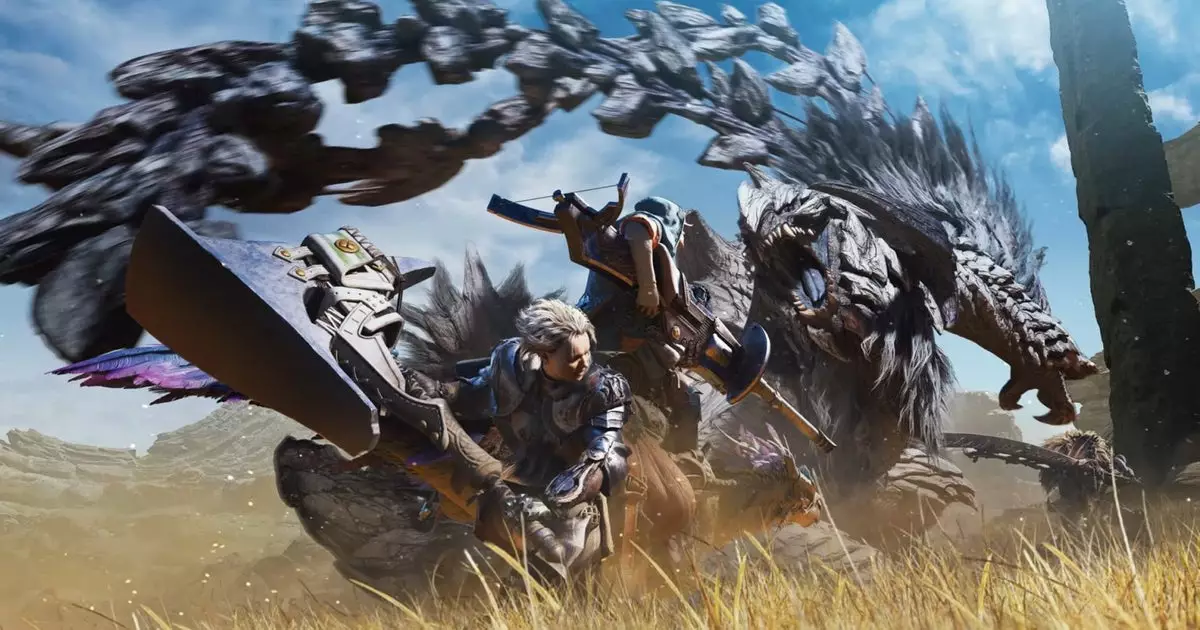The “Monster Hunter” franchise has consistently captivated players with its intricate blend of formidable creatures, various gameplay mechanics, and unique weapon types. With the release of “Monster Hunter Wilds,” enthusiasts expected an expansion of these elements; however, while the game introduces new monsters and fresher aesthetics, the fundamental weapon varieties remain largely the same as those found in previous installments. This article delves into the subtle yet significant evolution of weaponry in “Monster Hunter Wilds,” addressing the philosophy behind design decisions and the balance struck between innovation and tradition.
Familiarity Amidst New Arrivals
On first glance, “Monster Hunter Wilds” entices players with claims of fresh environments and novel creatures such as wyverns and toad monsters, but this novelty does not extend in equal measure to the arsenal at the hunter’s disposal. Each weapon feels polished, featuring upgraded designs and enhanced movesets, yet for many long-standing players, the core weapon types will appear surprisingly familiar, echoing memories from earlier titles like “Monster Hunter Freedom 2.” While the game has integrated updates from “Monster Hunter 4,” including the introduction of the Insect Glaive, there remains a sense of stagnation in weapon variety.
Yuya Tokuda, the game director, provides insight into this approach, emphasizing the developers’ mission to refine existing weapons rather than adding new categories. The strategic choice to focus on existing weapon types stems from a desire to enhance gameplay depth rather than simply inflate the inventory with new additions. As Tokuda explains, recognizing a viable 15th weapon type that harmonizes with established gameplay without redundancy presents a considerable challenge. Each weapon in “Monster Hunter” is rooted in its mechanics, and the developers are cautious about how a new addition could fit within this intricate system.
The current lineup encompasses a wide spectrum of weaponry, from the straightforward Greatsword to the more complex Hunting Horn. Tokuda’s perspective sheds light on the complexity of weapon design; rebalancing the existing arsenal requires significant resources, a factor that influences dev decisions more than merely introducing a new weapon might. In this latest entry, Capcom aims to provide a richer experience through refined mechanics and updated combos, ensuring that every weapon gains depth and that hunters can master a broader range of tactical options.
The challenge lies not only in crafting fresh moves for established weapons but also in cultivating the relationships between them. Each weapon type must interact with others in a way that feels fresh and invigorating. This delicate balancing act stands testament to the commitment of the developers to provide a rewarding gameplay experience that evolves while not straying too far from its origins.
Another dimension of the weapon design philosophy in “Monster Hunter Wilds” emerges when considering the lessons learned from “Monster Hunter: World.” With the Iceborne expansion raising the bar for player proficiency, there is a newfound need to tailor weapons toward a more skilled audience. The emphasis has shifted from simply teaching the basics to offering seasoned players new intricacies to master.
The intricate designs of weapons create a unique charm – each item is a reflection of a monstrous entity, calling attention to an interconnected relationship between hunters and the creatures they face. This atmospheric blending heightens immersion, making each weapon not only a tool of destruction but also an extension of the narrative experience.
As “Monster Hunter Wilds” establishes its footing within the franchise, there lies the potential for exciting innovations in upcoming titles. While adding weapon types may not be on Capcom’s immediate agenda, the continuous evolution of monster design can open new possibilities for future games. Imagining innovative beasts meant to inspire radical weapon transformations is an exciting prospect; a creature crafted entirely from elemental energy or a wyvern composed of fantastical shapes could rewire the very principles of weapon crafting.
Through focused refinement rather than radical changes, Capcom pays homage to the franchise’s origins while ensuring that future entries remain relevant and engaging. By investing thoughtfully in subtle mechanics and weapon balance, “Monster Hunter Wilds” re-establishes its firm foundation within the rich tapestry of role-playing gaming. The future may not hold unprecedented weaponry for now, but the paths carved in this latest installment could well lead to a burgeoning world of creative possibilities.

